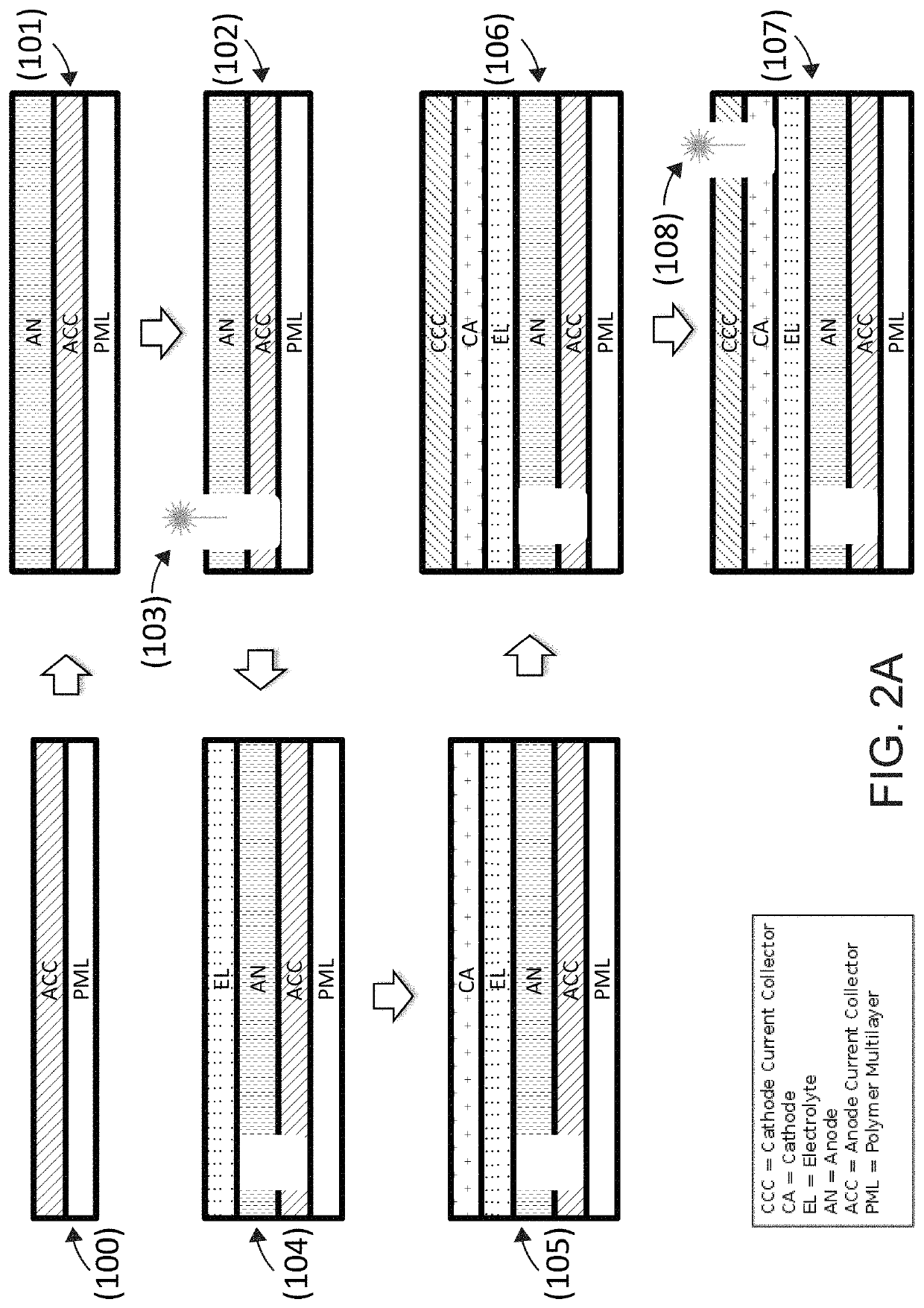High energy density multilayer battery cell with thermally processed components and method for making same
a multi-layer battery cell, high energy density technology, applied in the direction of electrode manufacturing process, electrochemical generator, vapour deposition manufacturing, etc., can solve the problems of difficult to calculate the optimal materials and layer thicknesses of the substrate, difficult to calculate the process rate required to produce battery cells profitably, and limited design of solid-state battery cells that can be produced at scale. , to achieve the effect of improving the connection of two electrode layers, high energy/capacity, and easy device splitting
- Summary
- Abstract
- Description
- Claims
- Application Information
AI Technical Summary
Benefits of technology
Problems solved by technology
Method used
Image
Examples
example 1
ion of Battery Terminations in Edge of the High Energy Density Solid State Battery
[0054]FIG. 1A is a simplified top view of a multi-layered solid state cell according to an embodiment of the present invention. FIG. 1A illustrates the definition of the t1, which is the distance from the side of the battery to the ablated edge of the electrode, such as 20 and 30. The 10 is the top view of the multi-stack of solid state thin film cell.
[0055]FIG. 1B is a graph of the relationship between battery volumetric energy density and a thickness t1 (cm) of a multi-layered solid state cell according to an embodiment of the present invention. FIG. 1B demonstrates the effect of the length edge of high energy density, which is denoted as t1 in this example. As the length, t1, increased from 0 to 0.4 cm, the energy density of the battery decreased from about 980 Wh / L to about 920 Wh / L. It clearly illustrated the importance the controlling t1 in order to achieve high energy density of battery. This ex...
PUM
| Property | Measurement | Unit |
|---|---|---|
| temperature | aaaaa | aaaaa |
| energy density | aaaaa | aaaaa |
| temperature | aaaaa | aaaaa |
Abstract
Description
Claims
Application Information
 Login to View More
Login to View More - R&D
- Intellectual Property
- Life Sciences
- Materials
- Tech Scout
- Unparalleled Data Quality
- Higher Quality Content
- 60% Fewer Hallucinations
Browse by: Latest US Patents, China's latest patents, Technical Efficacy Thesaurus, Application Domain, Technology Topic, Popular Technical Reports.
© 2025 PatSnap. All rights reserved.Legal|Privacy policy|Modern Slavery Act Transparency Statement|Sitemap|About US| Contact US: help@patsnap.com



